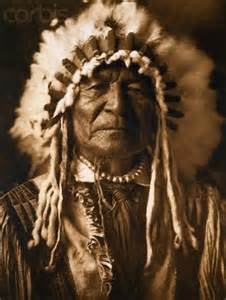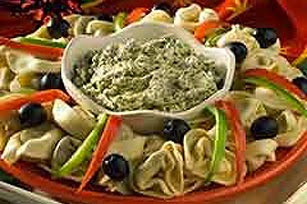The First Thanksgiving - Two Different Perspectives
Growing up we learned about the Pilgrims and the first Thanksgiving held in 1621. Although there are many versions, the story many of us know is the one we are taught in school. The first American Thanksgiving was held in celebration and thanks of the harvest that the Plymouth Colony was blessed with after a very harsh winter. The colonists celebrated the day in the spirit of traditional English harvest festivals.
The Native American Indians Samoset (Abenaki), Squanto (Patuxet-tributary of the Wampanoag), and Massasoit (Leader of the Wampanoag) were the honored guests of Captain Myles Standish, and were asked to bring their immediate families along for the feasting and celebration. Standish had no idea that their immediate family consisted of nearly one hundred members of their tribe. Standish and the Pilgrims did not have enough food to last three days for so many people, so Massasoit sent his men home to bring back more food and supplies. His generosity provided the majority of the food for the feast: turkeys, fish, deer, beans, cornbread and soup berries and squash. The Native American Indians compromised and ate at the table with the Pilgrims rather than on their customary mats and furs. For once, there was a peaceful accord among them all.
The first Thanksgiving represented a special camaraderie that existed between distinctly different people from equally different backgrounds. During this time, the Wampanoags and Myles Standish were even able to come to an agreement regarding the land necessary to build the town of Plymouth.
The White settlers would see this as a friendship being started, knowing that without the help of the Native American Indians, they would never have survived the rough winter. It was a time of celebrating with family and friends and being thankful they were still around to do it.
Thanksgiving to the Native American Indians may not mean the same thing that it did to the white settlers in American History. To the Indians, Thanksgiving would mean a totally different thing. It was the beginning of their end - a time where they had given up their land in return for gifts that were full of disease - which would kill many of them later down the road.
As more English settlers arrived, the differences in beliefs and cultures became more apparent, and eventually led to division between the two groups. The Pilgrims soon forgot the goodwill and aid afforded to them by the Wampanoag, and clashes for power soon followed. Thus, the first Thanksgiving is remembered very differently by these two groups of people.
To each of them their perspective on this historical event is correct. And on Thanksgiving we should honor them both.
The Native American Indians Samoset (Abenaki), Squanto (Patuxet-tributary of the Wampanoag), and Massasoit (Leader of the Wampanoag) were the honored guests of Captain Myles Standish, and were asked to bring their immediate families along for the feasting and celebration. Standish had no idea that their immediate family consisted of nearly one hundred members of their tribe. Standish and the Pilgrims did not have enough food to last three days for so many people, so Massasoit sent his men home to bring back more food and supplies. His generosity provided the majority of the food for the feast: turkeys, fish, deer, beans, cornbread and soup berries and squash. The Native American Indians compromised and ate at the table with the Pilgrims rather than on their customary mats and furs. For once, there was a peaceful accord among them all.
The first Thanksgiving represented a special camaraderie that existed between distinctly different people from equally different backgrounds. During this time, the Wampanoags and Myles Standish were even able to come to an agreement regarding the land necessary to build the town of Plymouth.
The White settlers would see this as a friendship being started, knowing that without the help of the Native American Indians, they would never have survived the rough winter. It was a time of celebrating with family and friends and being thankful they were still around to do it.
Thanksgiving to the Native American Indians may not mean the same thing that it did to the white settlers in American History. To the Indians, Thanksgiving would mean a totally different thing. It was the beginning of their end - a time where they had given up their land in return for gifts that were full of disease - which would kill many of them later down the road.
As more English settlers arrived, the differences in beliefs and cultures became more apparent, and eventually led to division between the two groups. The Pilgrims soon forgot the goodwill and aid afforded to them by the Wampanoag, and clashes for power soon followed. Thus, the first Thanksgiving is remembered very differently by these two groups of people.
To each of them their perspective on this historical event is correct. And on Thanksgiving we should honor them both.
Massasoit - Chief of the Wampanoag Confederacy
Captain Myles Standish





Comments
Post a Comment